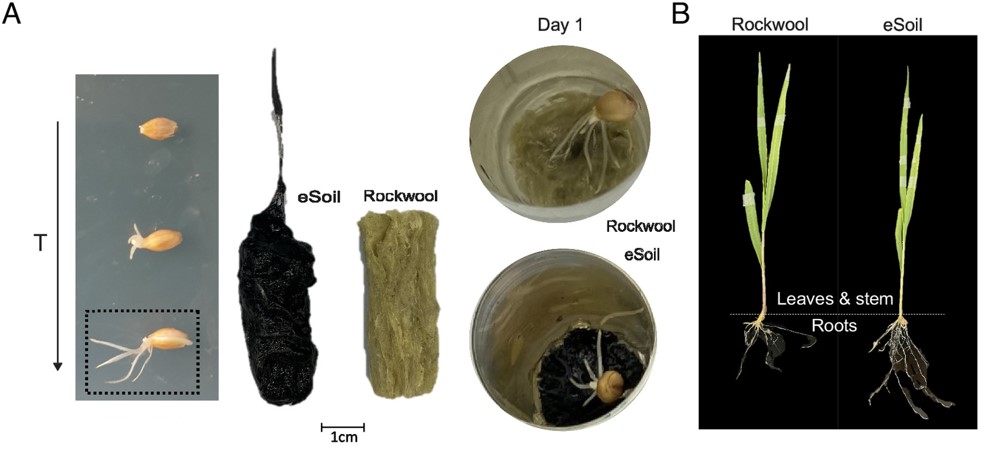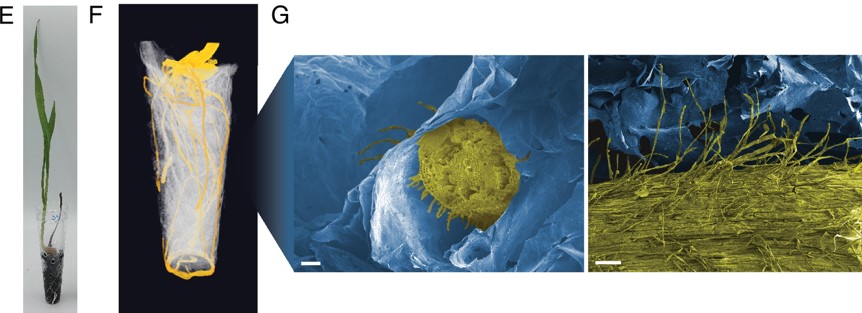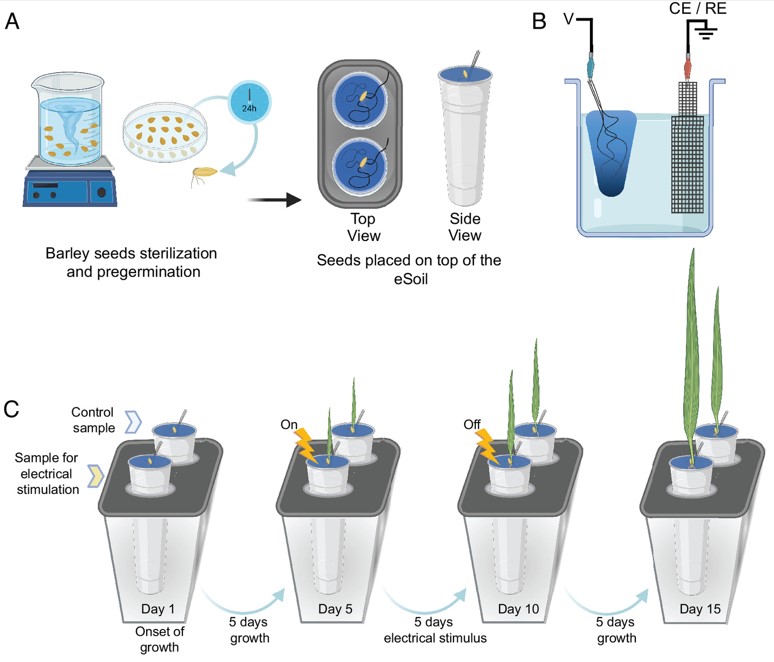Global challenges such as population growth, climate change, and urbanization are pressing the need for a major transformation in our food production systems. While novel cultivation methods like urban agriculture and hydroponics are gaining attention, they still face developmental hurdles—such as optimizing nutrient absorption and improving energy efficiency. Against this backdrop, a research team led by Linköping University in Sweden has developed a new technology called “eSoil,” which significantly accelerates plant growth by delivering gentle electrical stimulation directly to the roots. Applying the principles of “bioelectronics”—a field previously used in medical devices—this innovative material is emerging as a promising alternative to conventional hydroponic substrates, and is drawing global interest. In this article, we will explore the background of eSoil research, experimental results, and future prospects.
Reference: eSoil: A low-power bioelectronic growth scaffold that enhances crop seedling growth
What is eSoil? The Dawn of Bioelectronic Agriculture
The phenomenon of plants responding to electrical stimulation has been sporadically documented since the early 20th century. Plant roots possess numerous ion channels that respond to electrical signals, altering membrane potentials inside and outside the cells, and in turn affecting growth and differentiation. However, previous experimental setups required high voltage or bulky equipment, making them impractical for agricultural use. Meanwhile, the medical field saw rapid advancements in a conductive polymer known as PEDOT:PSS. This material remains conductive in moist environments, is soft and biocompatible, and is used in the development of technologies like neural interfaces and artificial retinas.
eSoil is a porous substrate made by combining PEDOT:PSS with cellulose. It can directly deliver electrical stimulation while being in close contact with the plant root system. Thanks to this structure, eSoil offers excellent water retention and air permeability, making it an attractive alternative to conventional hydroponic substrates like rockwool or urethane. Since cellulose is biodegradable, eSoil also poses less environmental burden upon disposal. These features make it a revolutionary substrate for sustainable and efficient crop production in closed or urban farming systems.

What Did the Experiments Reveal? Accelerated Growth in Barley Confirmed!
To examine how eSoil affects plant growth, researchers conducted experiments using barley (Hordeum vulgare) seedlings as a model plant. Three conditions were compared: (1) conventional rockwool substrate, (2) eSoil without electrical stimulation, and (3) eSoil with mild electrical stimulation. In condition (3), a very low voltage of approximately 0.5–0.8 V was continuously applied for 15 days.
The results showed that barley grown under condition (3) experienced significantly enhanced growth, with a roughly 50% increase in dry biomass compared to conditions (1) and (2). This growth was not limited to root development—above-ground organs like stems and leaves also showed marked improvements, suggesting that electrical stimulation to the roots may trigger systemic growth signals throughout the plant. Electron microscopy further revealed increased density and length of fine root hairs, which likely contributed to improved water and nutrient uptake.
In addition to faster growth, researchers also noted changes in the expression of genes related to nitrogen metabolism. Plants that received electrical stimulation via eSoil showed higher enzyme activity in nitrate reductase and related metabolic pathways, indicating an acceleration of nitrogen assimilation.

Why Does It Work? Electrical Stimulation Enhances Nitrogen Assimilation
One of the most significant insights from this research is that the observed growth promotion is not just a superficial physiological effect—it is closely linked to metabolic changes. Nitrogen is an essential nutrient for plant growth and is typically supplied in large amounts through fertilizers in agriculture. However, much of this nitrogen is not absorbed by crops and instead leaches into the environment. The study suggests that electrical stimulation helps plants absorb and reduce nitrate more efficiently, converting it into amino acids and proteins.
In fact, plants exposed to stimulation showed increased expression of nitrate assimilation-related genes such as NR, NIR, and GS, with activated nitrogen transport from roots to leaves. Nitrate and ammonium levels within the plant also shifted, reflecting a transition not merely toward “faster and bigger,” but toward “more efficient growth with fewer inputs.” This is a crucial finding for modern agriculture, which is heavily reliant on chemical fertilizers. eSoil may contribute to reducing fertilizer use and alleviating environmental impacts in the future.

Looking Ahead: How eSoil Could Transform Agriculture
The emergence of eSoil offers a hopeful vision for the future of sustainable agricultural technology. Particularly in closed-system environments such as urban farms and plant factories, the ability to reduce fertilizer inputs while achieving high yields can significantly lower energy costs and resource consumption. If future research proves eSoil’s effectiveness across a broader range of crops beyond barley, its practical applications will become even more compelling. There’s potential for use in high-value crops like tomatoes, lettuce, and strawberries, as well as in functional foods with enhanced nutritional value.
Looking further ahead, controlling eSoil’s electrical stimulation conditions using AI could enable customized growth algorithms for different plant species. Combined with LED lighting, it could become possible to implement multi-phase growth programs—managing light exposure and triggering hormonal pathways on demand. While still in the prototype stage, this technology is backed by robust scientific evidence and reliable experimental data, positioning it as a likely core innovation in future agricultural systems.
Will we one day live in a world where vegetables are grown with electricity? The answer depends on just how far eSoil technology can evolve from here.


コメント